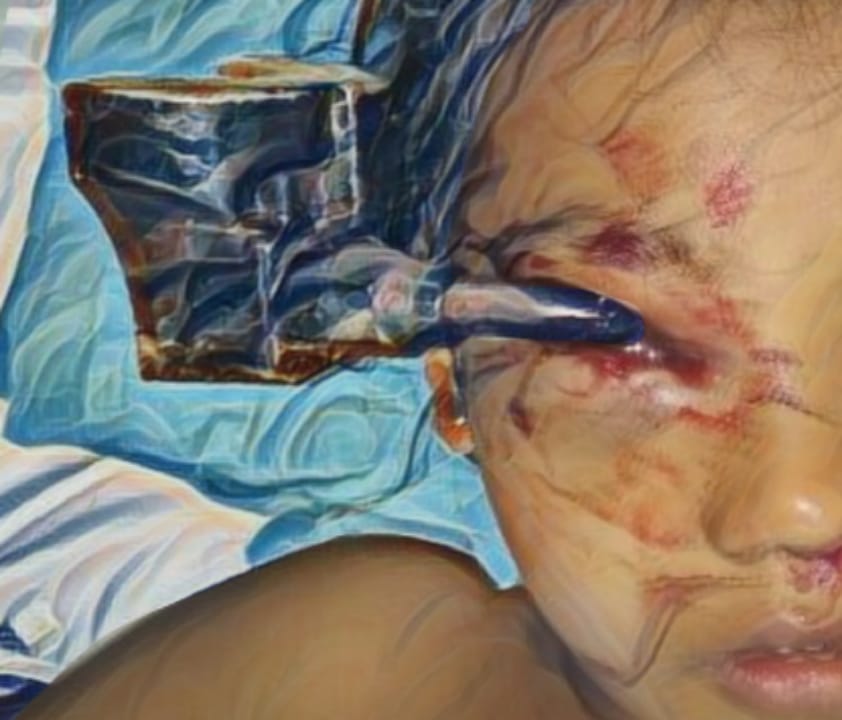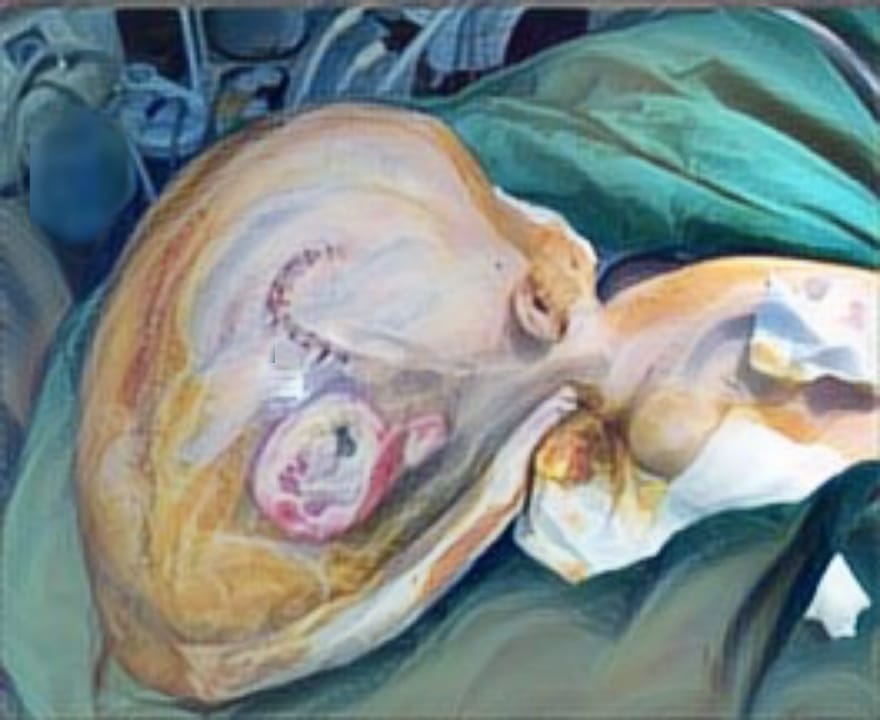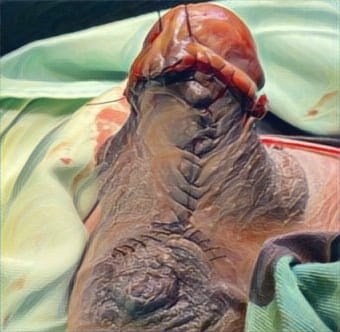PRESSURE INJURY PATIENTS CHARACTERISTIC IN SOUTH EAST INDONESIA WARRANTS IMMEDIATE INITIATION OF PREDICTIVE ASSESSMENT TOOLS: A CHART REVIEW

Downloads
Highlights:
- The absence of Stage 1 pressure injuries reflects the need for a predictive assessment tool.
- The majority of patients were aged 60–71 and had unstageable pressure injuries.
- The main referring departments were Internal Medicine, Cardiology, and Pulmonology.
Abstract:
Introduction: Pressure injury (PI) is a worldwide health problem, a burden in many aspects, and influences life quality. Every PI case would be different due to several underlying factors and conditions which hindered the prevention strategies. We share the overview of PI patients on South East Indonesia.
Method: A descriptive-retrospective study with chart review approach was held to review all case of PI consulted to plastic surgery from 2021-2023. Basic demographic data was collected along with the wound area, PI stage, and referrer department.
Result: PI was more frequent in Male patients insignificantly (p=0.069) developed more PI (55.13%) than female patients (44.87%). Almost half of PI case occurred in patients with more than 60 years old of age (48.71%). Most case were referred by the internal medicine, pulmology and cardiology department (43.59%) and mostly located in sacral region, (64.10%). Unstageable PI was found the most (48.72%) while no stage 1 PI was consulted.
Discussion: The finding of the study existing knowledge about the risk factors for pressure injuries (PI), particularly sensory and motor impairment as well as immobility. The absence of stage 1 PI underscores the importance of a standardized predictive assessment tool to enhance early detection and intervention. Integrating routine visual inspection and palpation into the assessment process could improve the early recognition of PI. The intervention should be extended to educational program to family caregiver in discharge planning.
Conclusion: PI incidence corresponds with known risk populations. Hospital leadership should implement predictive PI assessment tools and incorporate PI education into discharge planning to improve early detection and intervention.
European Pressure Ulcer Advisory Panel, National Pressure Injury Advisory Panel, Pan Pacific Pressure Injury Alliance. Prevention and treatment of pressure ulcers/injuries: clinical practice guideline: the international guideline. 2019. 405 p.
Thaller SR. Grabb and Smith’s Plastic Surgery, Seventh Edition. Plast Reconstr Surg [Internet]. 2014; 133(5). Available from: https://journals.lww.com/plasreconsurg/fulltext/2014/05000/grabb_and_smith_s_plastic_surgery,_seventh_edition.43.aspx
Coleman S, Gorecki C, Nelson EA, Closs SJ, Defloor T, Halfens R, et al. Patient risk factors for pressure ulcer development: systematic review. Int J Nurs Stud. 2013; 50(7): 974–1003. DOI:10.1016/j.ijnurstu. 2012.11.019
Yusharyahya SN, Legiawati L, Astriningrum R, Jonlean R & Andhira V. Characteristics of pressure injuries among geriatric patients at an Indonesian tertiary hospital: a cross-sectional study. Med J Indones [Internet]. 2023; 32(3):183-189.[cited 2025 Feb 21] Available from: https://mji.ui.ac.id/ journal/index.php/mji/article/view/7092.
Amir Y, Lohrmann C, Halfens RJ & Schols JM. Pressure ulcers in four Indonesian hospitals: prevalence, patient characteristics, ulcer characteristics, prevention, and treatment. Int Wound J. 2017; 14(1): 184–93. DOI: 10.1111/iwj. 12580.
Usanma Koban B, Tuzcular Vural EZ, Özkaya H & Gönenç I. Factors affecting pressure sores in palliative care patients. Haydarpasa Numune Training and Research Hospital Medical Journal. 2024; 64(1):1–7. DOI: 10.14744/hnhj. 2022.81 567
Padula WV & Delarmente BA. The national cost of hospital‐acquired pressure injuries in the United States. Int Wound J. 2019; 16(3): 634–40. DOI:10.11 11/iwj.13071
Amir Y, Halfens RJG, Lohrmann C & Schols JMGA. Pressure ulcer prevalence and quality of care in stroke patients in an Indonesian hospital. J Wound Care. 2013; 22(5): 254–260. DOI:10.12968/ jowc.2013.22.5.254
Kennerly SM, Sharkey PD, Horn SD, Alderden J & Yap TL. Nursing assessment of pressure injury risk with the Braden Scale validated against sensor-based measurement of movement. Healthcare. 2022; 10(11): 2330. DOI: 10.3390/ healthcare1011233 0
McGinnis E, Nelson EA, Gorecki C & Nixon J. What is different for people with MS who have pressure ulcers: a reflective study of the impact upon people's quality of life? J Tissue Viability. 2015;24(3):83-90. DOI: 10.1016/j.jtv.20 15.05.003
Shiferaw WS, Akalu TY, Mulugeta H & Aynalem YA. The global burden of pressure ulcers among patients with spinal cord injury: a systematic review and meta-analysis. BMC Musculoskelet Disord. 2020;21(1):334. DOI: 10.1186/ s12891-020-03369-0.
Gül Ş, Demir AS, Karadağ A & Karaçay P. Determining the quality of life and associated factors in patients with pressure injury. J Tissue Viability. 2025; 34(1): 100835. DOI:10.1016/j.jtv.2024. 11.007.
Meaume S, Dompmartin A, Lok C , Lazareth I, Sigal M, Truchetet F, et al. Quality of life in patients with leg ulcers: results from CHALLENGE, a double-blind randomized controlled trial. J Wound Care. 2017; 26(7):368-379. DOI: 10.12 968/jowc.2017.26.7.368.
von Elm E, Altman DG, Egger M, Pocock SJ, Gøtzsche PC & Vandenbroucke JP. The Strengthening the Reporting of Observational Studies in Epidemiology (STROBE) statement: guidelines for reporting observational studies. J Clin Epidemiol. 2008; 61(4): 344–9. DOI: 10.1157/13119325
Edsberg LE, Black JM, Goldberg M, McNichol L, Moore L & Sieggreen M. Revised National Pressure Ulcer Advisory Panel Pressure Injury Staging System. J Wound Ostomy Continence Nurs. 2016; 43(6): 585–597. DOI: 10.1097/ WON.0000000000000281
Gustinerz. Skala Braden untuk memprediksi risiko luka akibat tekanan [Internet]. Gustinerz.com; 2018 May 5 [cited 2025 Feb 25]. Available from: https://gustinerz.com/skala-braden-untuk-memprediksi-risiko-luka-akibat-tekanan/
Tayyib N, Coyer F, & Lewis P. Saudi Arabian adult intensive care unit pressure ulcer incidence and risk factors: a prospective cohort study. Int Wound J. 2016; 13(5): 912–9. DOI: 10.1111/iwj. 12406
Shiferaw WS, Akalu TY, Mulugeta H & Aynalem YA. The global burden of pressure ulcers among patients with spinal cord injury: a systematic review and meta-analysis. BMC Musculoskelet Disord. 2020; 21(1): 334. DOI:10.1186/ s12891-020-03369-0
Chen F, Wang X, Pan Y, Ni B & Wu J. The paradox of obesity in pressure ulcers of critically ill patients. Int Wound J. 2023; 20(7): 2753–63. DOI: 10.1111/iwj.14152
Alipoor E, Mehrdadi P, Yaseri M & Hosseinzadeh-Attar MJ. Association of overweight and obesity with the prevalence and incidence of pressure ulcers: a systematic review and meta-analysis. Clin Nutr. 2021; 40(9): 5089–5098. DOI: 10.1016/j.clnu.2021.08.006
Visscher M & Taylor T. Pressure ulcers in the hospitalized neonate: rates and risk factors. Sci Rep. 2014; 4(1): 7429. DOI: 10.1038/srep07429
Payne D. Skin integrity in older adults: pressure-prone, inaccessible areas of the body. Br J Community Nurs. 2020; 25(1): 22–6. DOI:10.12968/bjcn.2020.25.1.22
Waterlow J. Pressure sores: a risk assessment card. Nurs Times. 2018; 81 (48): 49-55. PMID: 3853163
Picoito R, Manuel T, Vieira S, Azevedo R, Nunes E & Alves P. Recommendations and statements of good practice for risk assessment of pressure injuries in adults admitted to intensive care units. 2025; 1-20. DOI: 10.20944/preprints202502.10 10.v1.
Purwanto YP. Perbedaan Skala Braden dan Skala Norton Untuk Mendeteksi Resiko Luka Tekan Pada Pasien Tirah Baring di RSUD dr. R Goeteng Taroenadibrata Purbalingga [Doctoral dissertation]. Universitas Muhammadiyah Purwokerto; 2020.
Soares FM de A, Vieira TVC, Mazocoli E & Souza RCS. Instrumentos preditores de risco para lesão por pressão em pacientes críticos. Acta Paul Enferm. 2023; 36:eAPE008032. DOI: 10.37689/ acta-ape/2023AO008032.
Kale ED, Nurachmah E & Pujasari H. Penggunaan skala Braden terbukti efektif dalam memprediksi kejadian luka tekan. J Keperawatan Indones. 2014;17(3):95-100.
Bhoki MW, Mardiyono M & Sarkum S. Braden scale and Norton in predicting risk of pressure sores in ICU room. J Riset Kesehatan.2014;3(2):576-586. DOI:10.31 983/jrk.v3i2.226
Mallah Z, Nassar N & Kurdahi Badr L. The effectiveness of a pressure ulcer intervention program on the prevalence of hospital-acquired pressure ulcers: controlled before and after study. Appl Nurs Res. 2015; 28(2): 106–13. DOI: 10.1016/j.apnr.2014.07.001
Liu Z, Meng J, Jing N & Liu X. Effects of predictive nursing interventions on pressure ulcer in older bedridden patients: a meta‐analysis. Int Wound J. 2024; 21(3). DOI: 10.1111/iwj.14676
Deng G, Lei Y, Tan H, Geng B & Liu Z. Effects of predictive nursing interventions on pressure ulcer in elderly bedridden patients. Int Wound J. 2024; 21(3). DOI: 10.1111/iwj.14690
Braden BJ. The Braden Scale for predicting pressure sore risk: reflections after 25 years. Adv Skin Wound Care. 2012; 25(2): 61. DOI: 10.1097/01.ASW. 0000411403.11392.10
Šáteková L, Žiaková K & Zeleníková R. Predictive validity of the Braden scale, Norton scale, and Waterlow scale in the Slovak Republic. Cent Eur J Nurs Midwifery. 2015; 6(3): 283–90. DOI:10.1111/ijn.12499
Pang SM & Wong TK. Predicting pressure sore risk with the Norton, Braden, and Waterlow scales in a Hong Kong rehabilitation hospital. Nurs Res. 1998; 47(3): 147–53.
Kwong E, Pang S, Wong T, Ho J, Shao-ling X & Li-jun T. Predicting pressure ulcer risk with the modified Braden, Braden, and Norton scales in acute care hospitals in Mainland China. Appl Nurs Res. 2005; 18(2): 122–128. DOI:10.1016/j.apnr.20 05.01.001
Sari SP, Everink IH, Sari EA, Afriandi I, Amir Y, Lohrmann C, et al. The prevalence of pressure ulcers in community-dwelling older adults: a study in an Indonesian city. Int Wound J. 2019; 16(2): 534–41. DOI: 10.1111/iwj. 13081
Singh C & Shoqirat N. Community-acquired pressure injuries in the acute care setting. Adv Skin Wound Care. 2021; 34(3): 1–4. DOI: 10.1097/01.ASW.00007 32748.56041.cf
Corbett LQ, Funk M, Fortunato G & O’Sullivan DM. Pressure injury in a community population. J Wound Ostomy Continence Nurs. 2017; 44(3): 221–7. DOI:10.1097/WON.0000000000000320
Han C, Yang F & Liu L. Effectiveness of continuous care interventions in elderly patients with high-risk pressure ulcers and impact on patients’ activities of daily living. Altern Ther Health Med. 2024; 30(3): 118–23.
Rafiei H, Vanaki Z, Mohammadi E & Hosseinzadeh K. The role of family caregivers in pressure injury prevention guidelines: a scoping review. Home Healthc Now. 2021; 39(5): 253–60. DOI: 10.1097/NHH.0000000000001000
Copyright (c) 2025 Angela Djunaedi, Robertus Arian Datusanantyo

This work is licensed under a Creative Commons Attribution-ShareAlike 4.0 International License.
JURNAL REKONSTRUKSI DAN ESTETIK by Unair is licensed under a Creative Commons Attribution-ShareAlike 4.0 International License.
- The journal allows the author to hold copyright of the article without restriction
- The journal allows the author(s) to retain publishing rights without restrictions.
- The legal formal aspect of journal publication accessbility refers to Creative Commons Attribution Share-Alike (CC BY-SA)




















